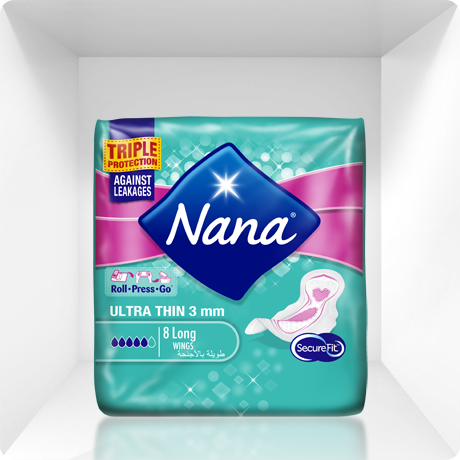Menstruation actually costs a woman much more than just the pain of menstrual cramps. The cost of sanitary napkins, tampons, pain relievers and heating pads to soothe the aches, along with the mental stress of potential leakage, all add to it. It seems “Aunt Flo” is a pretty expensive lady!
Every woman needs an assurance that their sanitary product is providing them reliable absorbency. With such a big amount of money being spent on such products, it would be wise to choose what’s best. NANA, a leading brand in sanitary pads, has pledged to provide just such assurance for every woman.
4 Reasons to Choose NANA Sanitary Pads

- Good Absorbency Rate
The products are especially designed to absorb large quantities of menstrual blood. The aim is to make the user feel dry and comfortable, without having to change the napkin for about 5-7 hours. The brand comes with a middle gel layer that absorbs the blood and converts it into gel. This eliminates the chances of backflow from the pad when pressure is applied, such as when you are sitting down. Winged pads further prevent leakage while also assuring maximum comfort.
- Texture & Material Comfort
The napkins are soft and skin friendly and avoids bruises, itches and other skin irritations during the cycle. The type of material used in the pad dictates its breathability. It is found that when a sanitary pad comes into contact with your delicate area, the humidity elevates to 85% or higher, making the skin damp, tender and very sensitive.
- Thickness & Length
The thickness of the product totally depends on the preference of the woman using it. The thickness usually ranges from panty liner size to ultra thin, regular and super. A woman with very heavy flow should consider the super size, while those with light flow should try the ultra thin or regular. The napkins are also classified as Day or Night, with day pads being shorter and night pads being comparatively bigger for use for longer periods of time. You should always buy a product that is a minimum of 8 inches in length, covering the vulva fully all the way to distal areas of the anus, in order to absorb blood totally.
- Minimizes Skin Abrasion
Keep in mind that menstrual blood and perspiration tend to stay on the skin, making it really damp and uncomfortable on heavy flow days, giving you an uneasy feeling of stuffiness and wetness. Even on the light flow days, when moisture levels are lower, the constant rubbing of your skin against the sanitary product can give rise to abrasions, making your skin red and itchy. However, NANA sanitary pads are made of materials that are gentle on the skin, reducing dampness and the changes of skin irritation.
Remember, the product you choose should be based on your specific needs, which can vary from the start of menstruation, when the flow is heavier, to the last day, when you might only need a panty liner.
Menstrual blood that is a crimson red colour without the presence of clots or mucus occurs when there is adequate blood flow within the uterus. Dark, purple or brown blood and the presence of clots indicates poor uterine circulation.
ReplyDeleteEssentials UltraThin Pad